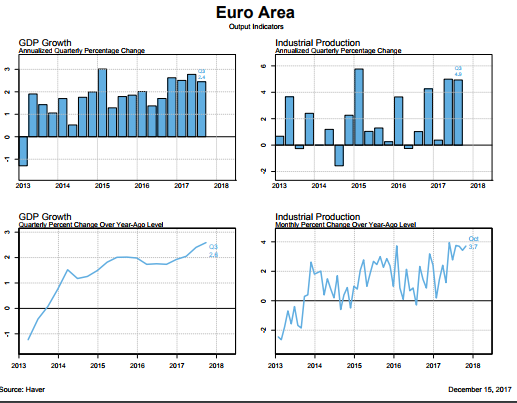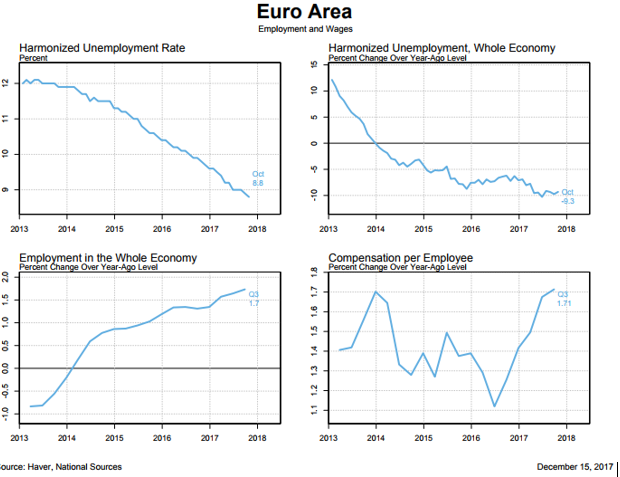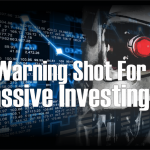The euro area economy has performed significantly better in 2017 than one would have expected a year ago.
Indeed, as a European Commission report recently observed (Autumn 2017), “for the first time in almost a decade, the economies of all EU Member States are expected to grow throughout the entire forecasting period (2016, 2017 and 2018).”
Real GDP in the euro area increased at a 2.5% annual rate in the third quarter of 2017 and for the full year is expected to post 2% growth. Stronger than expected growth in 2017 was propelled by resilient consumer spending, improved growth around the world, and declining unemployment.
Consumer and business confidence levels also improved as the economies of all the Member States are expanding and their labor markets are also improving.
Capital investment is also picking up as financing remains very attractive due to quantitative easing. The European Commission expects the euro area economy to expand by 2.1% in 2018 and at 1.9% in 2019.
And while unemployment in the euro area is still high, at least employment and wages are both rising.
Since 2013, the harmonized unemployment rate in the euro area has declined from 12% to 8.8% as of October 2017. A year earlier, the jobless rate was also much higher at 9.8%.
As of the third quarter, employment in the whole economy had expanded by 1.7% compared to year-ago-levels, while wage compensation increased by 1.7%.














Leave A Comment